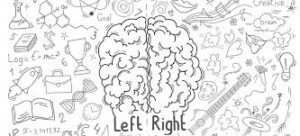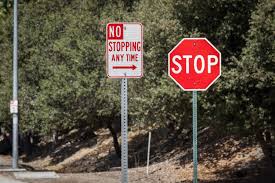Perspectives on Learning Spaces – it has become a HOW

Two weeks ago, I really struggled to come up with a metaphor for a learning space. I chose a poem, Daffodils by WIlliam Wordsworth to represent the individual learning through inspiration that came from nature.
I also liked a learning space as a metaphor of a journey, or conceptualised as a dining table or the petals of a flower. I found it extraordinary that we would spend two weeks considering what a learning space is, as it seemed commonsensical to me.
 Now, two weeks on, my perspective on a learning space has changed. In my mind, a learning space is still a journey and is still an individual gleaning inspiration from a community of others (the daffodils) and also from nature and the world around them. But my perspective has become more multi-faceted and layered.
Now, two weeks on, my perspective on a learning space has changed. In my mind, a learning space is still a journey and is still an individual gleaning inspiration from a community of others (the daffodils) and also from nature and the world around them. But my perspective has become more multi-faceted and layered.
 I appreciate that there are juxtapositions and contrasts, as well as fluidity and connections. I found the visualisation of the spaces of the IDEL course immensely frustrating, as I am not particularly creative. However, it helped me visualise the virtual and the real, the individual and the community, the transtemporal and the transpatial aspects of distance learning.
I appreciate that there are juxtapositions and contrasts, as well as fluidity and connections. I found the visualisation of the spaces of the IDEL course immensely frustrating, as I am not particularly creative. However, it helped me visualise the virtual and the real, the individual and the community, the transtemporal and the transpatial aspects of distance learning.
I now want to think about how I could apply what I have learnt in a material way to my teaching. It is all very well to argue that technology and education need to be playfully entangled and that they complement each other. To envisage learning spaces and how we can best exploit them for purposeful learning. To argue for a constructivist future for the relationship of digital and education. What I want to know now, is how.
 How do we get the message to the teachers who are at the coalface of digital education? How do we enable them to improve their teaching practice, to consequently improve learning experiences? How we persuade them of the merits of a style of teaching that puts the learner at its heart?
How do we get the message to the teachers who are at the coalface of digital education? How do we enable them to improve their teaching practice, to consequently improve learning experiences? How we persuade them of the merits of a style of teaching that puts the learner at its heart?
I chose to do this course so that I would be exposed to more than my little sphere of teaching. Envisaging learning spaces as inter-connected realms between the virtual and the real is enlightening. What I now want to do is learn what I can do to enable that in a practical way, particularly in Kenya.
 This afternoon, I was talking to a good Kenyan friend and colleague, Levi Wataka. He was born in the slums and has known deprivations that I have only ever read about. He is a fantastically talented musician and has risen to amazing heights within the classical music industry in Kenya. He is the only trained orchestral conductor in the country and is deeply involved in promoting classical music. He runs music workshops in the slums. Check out Ghetto Classics – one of Levi’s personal projects.
This afternoon, I was talking to a good Kenyan friend and colleague, Levi Wataka. He was born in the slums and has known deprivations that I have only ever read about. He is a fantastically talented musician and has risen to amazing heights within the classical music industry in Kenya. He is the only trained orchestral conductor in the country and is deeply involved in promoting classical music. He runs music workshops in the slums. Check out Ghetto Classics – one of Levi’s personal projects.
He is currently on a panel with York University that is exploring music and education. He was very frustrated, as the rest of the panel (all in the UK) were talking about exploring a post-modernist musical experience where, as he put it, ‘anything goes’. They were specifically discussing what a learning space for a musical experience might be. He pointed out that if he told a boy in the slums that ‘anything goes’ that boy would not survive long. The point of what he was saying is that we (the wealthy western world) should be careful to be too adventurous in what we suggest. I think he is right.
I really want to find a compromise, in my professional contribution to Kenyan education, that takes into account the need for face-to-face pedagogy, the need in a developing world to perhaps not go too fast, yet that can exploit the excitement and richness of what the digital world of education has to offer. That is what I want to get out of this MSc. How can I exploit innovation and excitement within technology, without losing sight of the fact that most people in this world can only dream of accessing Minecraft as a virtual world. That most people in this world will only every experience mundane teaching (when they can afford it) and that often education for them is linked to receiving the only meal of the day they can get.
Learning spaces for most Kenyan children and teenagers are over-crowded, noisy and difficult. But perhaps that is exactly where technology will come in. We are able to collaborate with spaces and people never before thought possible and really make a difference.
Technology can play a part in opening the doors to learners in the developing world to find the metaphors that we have spent two weeks exploring: dining tables to whet the appetite and quench the thirst, journeys of excitement and inspiration, virtual worlds that represent new spaces offering new possibilities.




What an excellent post. It is really useful to reflect on your learning journey on this course and celebrate *all* the experiences including the frustrating ones. The question of how to enact these theories we’ve been exploring over the last none weeks or so is both important and far from straightforward. A key aspect for the posthuman and assemblage based theories for me is how they open up possibilities of how teaching and learning can be practiced in any given situation. Obviously, given the type of programme this is, we’re are predominately exploring digital assemblages of education, but reassembling education does not depend on access to the digital. Asking how you might teach maths if you only had access to musical instruments may open up new possibilities of how you teach maths (and/ or music). I’ve been involved in programmes using music technologies, video and animation suites, wet art spaces, a soon to be demolished factory space in assembling education with an intention of engaging pupils in to our education system – to turn up on time, to work together, to plan activities and to create things. Some involved digital technologies and some didn’t, but all involved exploring what was possible in these specific socio-material assemblages at that particular time (the factory was demolished so we couldn’t use that again but we worked with that space in researching abandoned machinery and tons of paperwork – some of what become historical artefacts and given to the local museum – we held music workshops, created a light installation, ran a pop-up cafe, interviewed local older people about their memories of the factory and so on). We created lots of noise and mayhem but also a pretty effective Pupil Referral & Reintegration Unit for the local education authority. I’ve gone back to some of the evaluation work and the researchers/ evaluators appear to have been using a constructivist perspectives in their investigation of our work. Which is all a long-winded way of saying I agree that tech can play a part – but also that these theoretical perspectives go far beyond the use of digital technologies.
And just to add a point about the privilege of being adventurous, is that it is about using what is available and exploring together what might be possible. Running classical music workshops in the slums of Kenya sounds pretty adventurous to me.